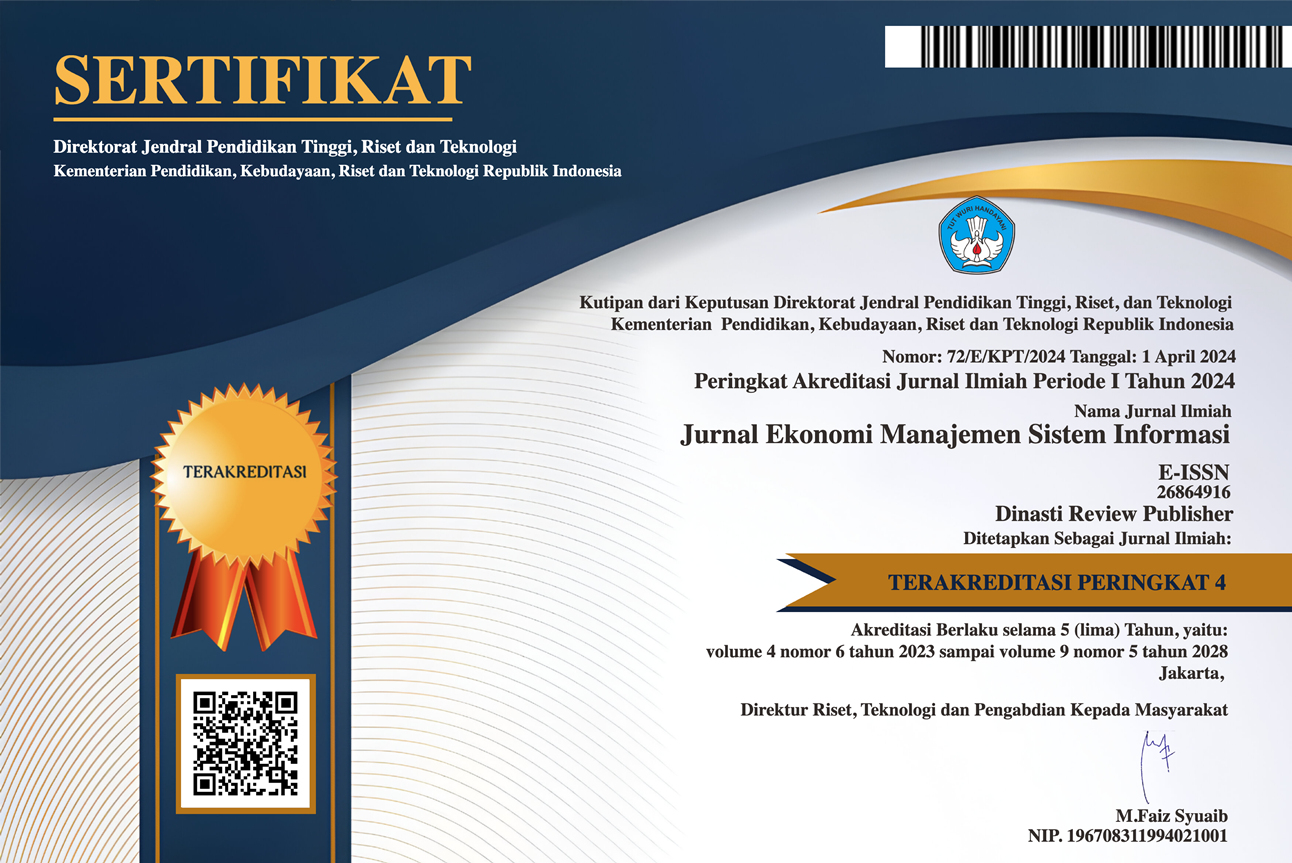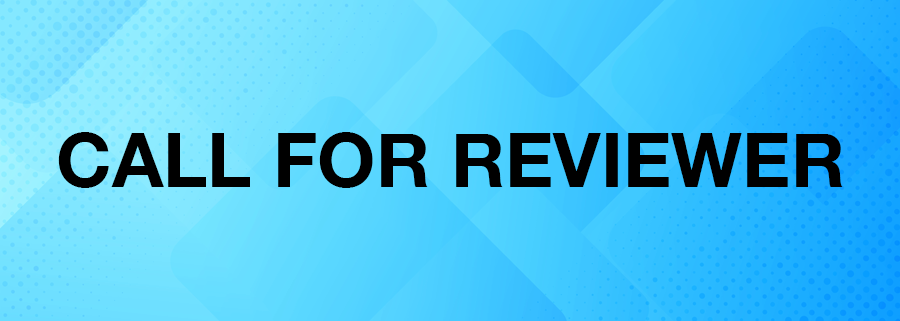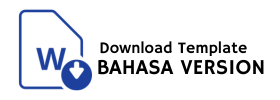Crisis Management Strategies in Influencer Marketing
DOI:
https://doi.org/10.38035/jemsi.v6i1.2872Keywords:
Influencer, Influencer Marketing, Key Opinion Leader (KOL), Krisis Komunikasi, SelebgramAbstract
Industri Influencer Marketing telah berkembang pesat dan memperkuat posisinya sebagai strategi utama dalam pemasaran digital saat ini. Berdasarkan laporan Influencermarketinghub.com tahun 2024, industri ini diprediksi mencapai $24 miliar pada akhir tahun, menegaskan bahwa Influencer Marketing bukan lagi sekadar tren sementara. Di Indonesia, strategi ini terbukti efektif di sektor kecantikan dan kesehatan (Bhatnagar et al., 2024). Namun, kolaborasi antara brand, influencer, dan pihak ketiga sering mengalami krisis komunikasi yang dapat menghambat kesuksesan kampanye. Penelitian ini berjudul "Strategi Manajemen Krisis dalam Influencer Marketing" bertujuan untuk mengidentifikasi krisis komunikasi dalam Influencer Marketing, mencakup penyebab, strategi penanganan, dan pencegahan di masa depan. Melalui pendekatan kualitatif, data diperoleh dari observasi, studi pustaka, dan wawancara dengan praktisi berpengalaman. Hasilnya menunjukkan bahwa krisis sering disebabkan oleh ketidakjelasan informasi, perbedaan persepsi, dan kurangnya keterampilan komunikasi. Tanda-tanda krisis meliputi komunikasi yang lambat, tidak jelas, serta ketidakpatuhan Influencer terhadap perencanaan kampanye. Strategi efektif meliputi negosiasi, penggunaan bahasa yang jelas, dan penyampaian ekspektasi yang rinci. Komunikasi yang efektif menjadi kunci untuk mengurangi dampak negatif, meningkatkan praktik Influencer Marketing, dan memperkuat kolaborasi dengan influencer.
References
Anjani, Sari & Irwansyah, Irwansyah. (2020). PERANAN INFLUENCER DALAM MENGKOMUNIKASIKAN PESAN DI MEDIA SOSIAL INSTAGRAM [THE ROLE OF SOCIAL MEDIA INFLUENCERS IN COMMUNICATING MESSAGES USING INSTAGRAM]. Polyglot: Jurnal Ilmiah. 16. 203. https://doi.org/10.19166/pji.v16i2.1929
Antoniades, G., Briede, D., Kontina, M., Milevica, I., & Stige-Skuskovnika, V. (2020). Influencers’ Engagement in a Brand Communication: Latvia and Cyprus Cases. Economics and Culture, 17(1), 53–61. https://doi.org/10.2478/jec-2020-0005
Anymindgroup.com. (2020, Sep 10). AnyMind Group's State of Influencer Marketing in Asia 2020 (Bahasa Indonesia). Anymind. Retrieved August 1, 2024 (10.23 AM WIB), from https://anymindgroup.com/id/news/announcement/7796/
Aven, T., & Renn, O. (2009). On risk defined as an event where the outcome is uncertain. Journal of Risk Research, 12(1), 1–11. https://doi.org/10.1080/13669870802488883
Bungin, B. (2015). Metodologi penelitian kualitatif?: aktualisasi metodologis ke arah ragam varian kontemporer. Raja Grafindo Persada.
Bhatnagar, Digant. Astha Kakkar,. Aman Kukreja,. & Jaipal Singh Bhagrot. (2024). Effectiveness of Influencer Marketing in the Beauty and Wellness Industry. Indian Scientific Journal Of Research In Engineering And Management, https://doi.org/10.55041/ijsrem27948
Brown, D., & Hayes, N. (2016). Influencer Marketing: Who Really Influences Your Customers?. Routledge.
Brown, C., & McCool, J. (2016). Constraints and Opportunities for Effective Teaching in the ShortForm Video Medium. Journal of Visual Communication in Medicine, 24–30.
Brown, D., & Hayes, N. (2016). Influencer Marketing: Who Really Influences Your Customer. Oxford: Routledge
Carah, N., & Shaul, M. (2016). Brands and Instagram: Point, tap, swipe, glance. Mobile Media & Communication, 4(1), 69-84. https://doi.org/10.1177/2050157915598180
Coombs WT. (1998). The Internet as a potential equalizer: new leverage for confronting social irresponsibility. Public Relation Rev 24(3):289–303
Coombs WT. (2001). Teaching the crisis management/communication course. Public Relations Review 27:81–101.
Coombs WT. (2023). Ongoing crisis communication: planning, managing, and responding. Sage
Chandralekha, J. S. (2024). Role of Crisis Communication in Risk Management. International Journal For Multidisciplinary Research, 6(3). https://doi.org/10.36948/ijfmr.2024.v06i03.21962
Databoks.katadata.com. (2024, March 1). Ini Media Sosial Paling Banyak Digunakan di Indonesia Awal 2024. Databoks. Retrieved June 15, 2024, from https://databoks.katadata.co.id/datapublish/2024/03/01/ini-media-sosial-paling-banyak-digunakan-di-indonesia-awal-2024
Departemen Pendidikan Nasional. (2007). Kamus Besar Bahasa Indonesia (KBBI). Edisi Ketiga. Jakarta: Balai Pustaka
Duffy, B. E., & Hund, E. (2015). “Having it All” on Social Media: Entrepreneurial Femininity and Self-Branding Among Fashion Bloggers. Social Media + Society, 1(2). https://doi.org/10.1177/2056305115604337
De Veirman, M., Cauberghe, V., & Hudders, L. (2017). Marketing through Instagram influencers: the impact of number of followers and product divergence on brand attitude. International Journal of Advertising, 36(5), 798–828. https://doi.org/10.1080/02650487.2017.1348035
Gountas, J., Gountas, S., Reeves, R. A., & Moran, L. (2012). Desire for Fame: scale development and association with personal goals and aspirations. Psychology & Marketing, 29(9), 680-689. https://doi.org/10.1002/mar.20554
Human-Van Eck, D., Pentz, C., Beyers, T. (2021). Influencers on Instagram: The Influence of Disclosure, Followers and Authority Heuristic on Source Credibility. In: Martínez-López, F.J., López López, D. (eds) Advances in Digital Marketing and eCommerce. DMEC 2021. Springer Proceedings in Business and Economics. Springer, Cham. https://doi.org/10.1007/978-3-030-76520-0_31.
Heming, Lina. (2020). CAN I TRUST YOU @INFLUENCER? : REASONS WHY FOLLOWERS BUILD A TRUSTED RELATIONSHIP WITH INFLUENCERS. (Tesis Magister, University of Twente http://essay.utwente.nl/81287/
Hermawan, Daniel. (2021). Influencer Marketing in Digital Era: Does It Really Works?. International Journal of Management, Entrepreneurship, Social Science and Humanities. 3. https://doi.org/10.31098/ijmesh.v3i2.260
Hubspot.com. (2024, Sep 2). The HubSpot Blog's 2024 Social Media Marketing Report: Data from 1400+ Global Marketers. Hubspot. Retrieved September 2, 2024 (11.25 AM WIB), from https://blog.hubspot.com/marketing/hubspot-blog-social-media-marketing-report
Influencermarketinghub.com. (2024, August 8). The State of Influencer Marketing 2024: Benchmark Report. Influencer Marketing Hub. Retrieved September 2, 2024 (3.30 PM WIB), from https://influencermarketinghub.com/influencer-marketing-benchmark-report
Indrawan, J. (2019). Cyberpolitics Sebagai Perspektif Baru Memahami Politik di Era Siber [Cyberpolitics as A New Perspective in Understanding Politics in The Cyber Era]. Jurnal Politica Dinamika Masalah Politik Dalam Negeri dan Hubungan Internasional. https://doi.org/https://doi.org/10.22212/jp.v10i1.1315
Jin, S.V., Muqaddam, A. and Ryu, E. (2019), Instafamous and social media Influencer Marketing. Marketing Intelligence & Planning, Vol. 37 No. 5, pp. 567-579. https://doi.org/10.1108/MIP-09-2018-0375
Kowalczyk, C.M. and Pounders, K.R. (2016). Transforming celebrities through social media: the role of authenticity and emotional attachment. Journal of Product & Brand Management, Vol. 25 No. 4,pp. 345-356.
Khadziq, Khadziq. (2016). KONVERGENSI MEDIA SURAT KABAR LOKAL (Studi Deskriptif Pemanfaatan Internet Pada Koran Tribun Jogja dalam Membangun Industri Media Cetak Lokal). Profetik: Jurnal Komunikasi. 9. https://doi.org/10.14421/pjk.v9i1.1187
Khamis, Susie & Ang, Lawrence & Welling, Raymond. (2016). Self-branding, ‘micro-celebrity’ and the rise of Social Media Influencers. Celebrity Studies. 8. 1-18. 10.1080/19392397.2016.1218292
Kresno, S., & Martha, E. (2016). Metodologi Penelitian Kualitatif Untuk Bidang Kesehatan. Depok: Rajagrafindo.
Levashina, J., Peck, J. A., & Ficht, L. (2017). Don’t Select until You Check: Expected Background Checking Practices. Employee Responsibilities and Rights Journal, 29(3), 127–148. https://doi.org/10.1007/s10672-017-9294-4
Maulida, K., Edris, M., & Utomo, J. (2023). The Influence of Product Reviews and ContentCreators on Purchase Interest through Affiliate Marketing of Shopee E-Commerce users in Kudus Regency. Journal of Finance and Business Digital, 2(3), 365–374. https://doi.org/10.55927/jfbd.v2i3.6016
Moleong, L. J. (2017). Metodologi penelitian kualitatif. Remaja Rosdakarya.
Mondry, M. S. (2016). Pemahaman teori dan praktik jurnalistik. Bogor: Ghalia Indonesia.
Mwandembo, F. (2024). Navigating the Storm; Effective Crisis Communication Strategies. International Journal of Innovative Science and Research Technology (IJISRT), 2685–2697. https://doi.org/10.38124/ijisrt/IJISRT24MAR2080
Putri, S. F. R., & Destiwati, R. (2020). PERSONAL BRANDING SELEBTWIT @andihiyat MENGGUNAKAN KRITERIA AUTHENTIC PERSONAL BRANDING. eProceedings of Management, 7(2).
Prastya, N. M. (2011). Komunikasi Krisis di Era New Media dan Social Media. Jurnal komunikasi, 6(1).
Reynaldhia, D. (2024). Peran Influencer Marketing di Instagram - Jejak Pustaka. Jejak Pustaka.Sari,
Sugiyono, P. D. (2017). METODE PENELITIAN KUALITATIF. CV ALFABETA.
Sharma, A. (2018). Factors Affecting the abilities of effective Influencer and negotiator: An empirical Investigation. Psychology and Education, 55(1). https://doi.org/10.48047/pne.2018.55.1.63
Singha, R., Singha, S., Ruben, V. M., Natal, M. S., Longkumer, A., & Haokip, A. D. (2024). The Ethics of Collaborating With Social Media Influencers. In Influencers and Psychological Well-Being (pp. 326–342). https://doi.org/10.4018/979-8-3693-0912-4.ch016
Smit, B., & Onwuegbuzie, A. J. (2018). Observations in Qualitative Inquiry: When What You See Is Not What You See. International Journal of Qualitative Methods, 17(1), 160940691881676. https://doi.org/10.1177/1609406918816766
Upadhyay, S., & Upadhyay, N. (2023). Mapping crisis communication in the communication research: what we know and what we don’t know. Humanities and Social Sciences Communications, 10(632).
Veil, S. R. (2022). Crisis Communication, Public Relations. In The International Encyclopedia of Health Communication (pp. 1–5). Wiley. https://doi.org/10.1002/9781119678816.iehc0695
Wang B, Zhuang J. (2018). Rumor, response, debunking response, and decision makings of misinformed Twitter users during disasters. Nat Hazards 93:1145–1162. https://doi.org/10.1007/s11069-018-3344-6
Ziano, I., & Wang, D. (2021). Slow lies: Response delays promote perceptions of insincerity. Journal of Personality and Social Psychology, 120(6), 1457–1479. https://doi.org/10.1037/pspa0000250
Downloads
Published
How to Cite
Issue
Section
License
Copyright (c) 2024 Eliffa Ashria, Sri Dayanti, Fitria Ayuningtyas

This work is licensed under a Creative Commons Attribution 4.0 International License.
Hak cipta :
Penulis yang mempublikasikan manuskripnya di jurnal ini menyetujui ketentuan berikut:
- Hak cipta pada setiap artikel adalah milik penulis.
- Penulis mengakui bahwa Jurnal Ekonomi Manajemen Sistem Informasi (JEMSI) berhak menjadi yang pertama menerbitkan dengan lisensi Creative Commons Attribution 4.0 International (Attribution 4.0 International CC BY 4.0) .
- Penulis dapat mengirimkan artikel secara terpisah, mengatur distribusi non-eksklusif manuskrip yang telah diterbitkan dalam jurnal ini ke versi lain (misalnya, dikirim ke repositori institusi penulis, publikasi ke dalam buku, dll.), dengan mengakui bahwa manuskrip telah diterbitkan pertama kali di Jurnal Ekonomi Manajemen Sistem Informasi (JEMSI).










































































